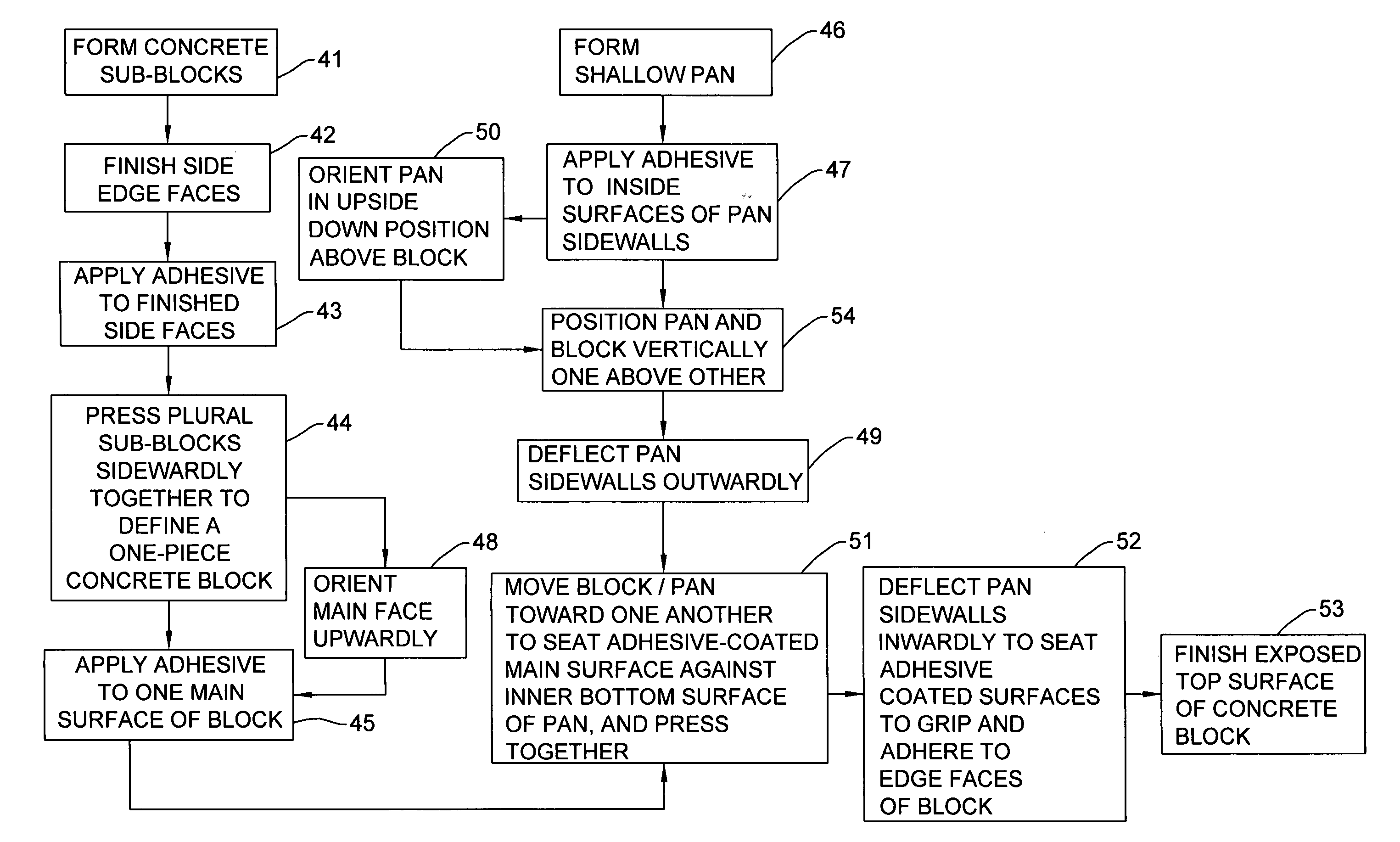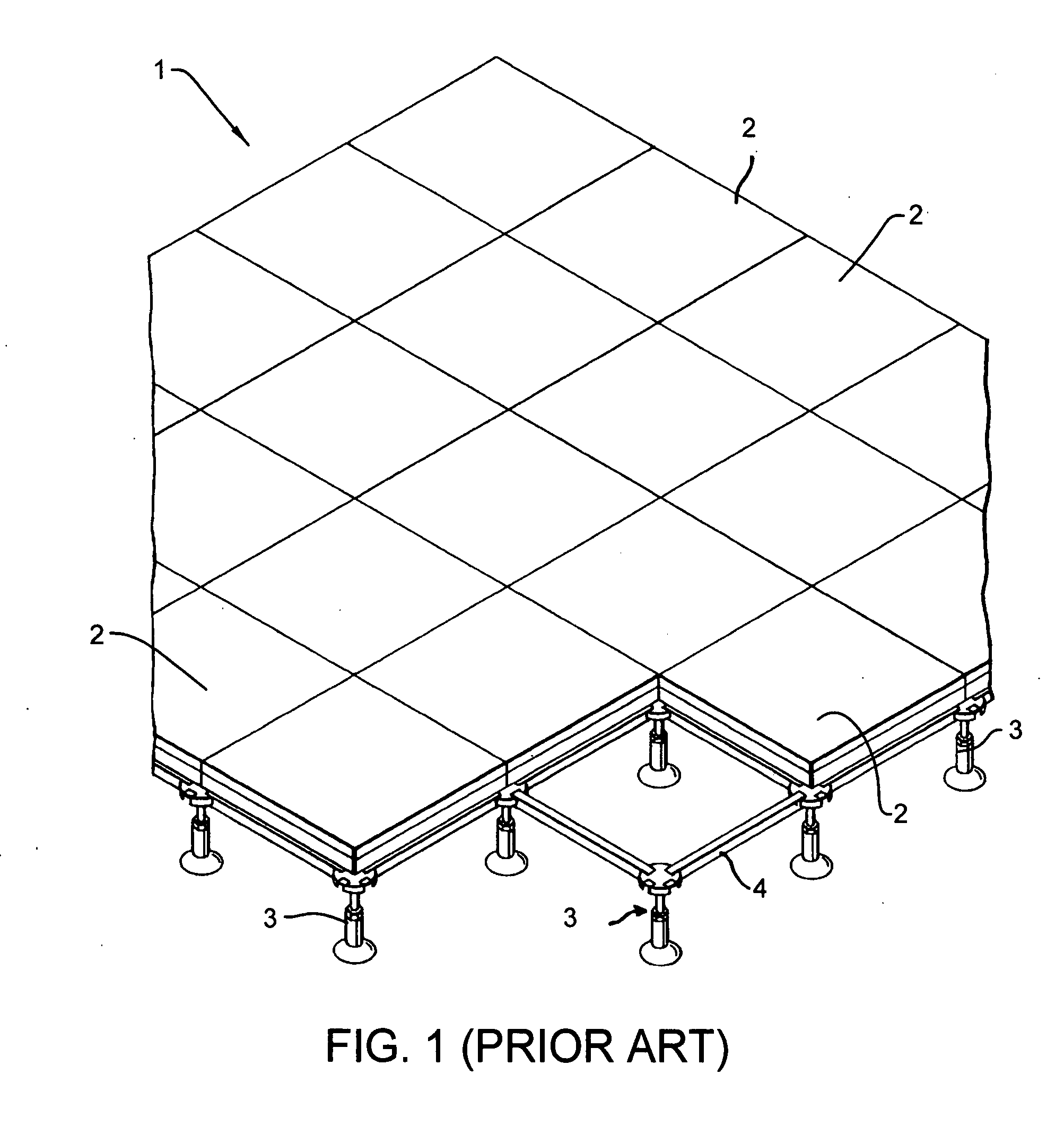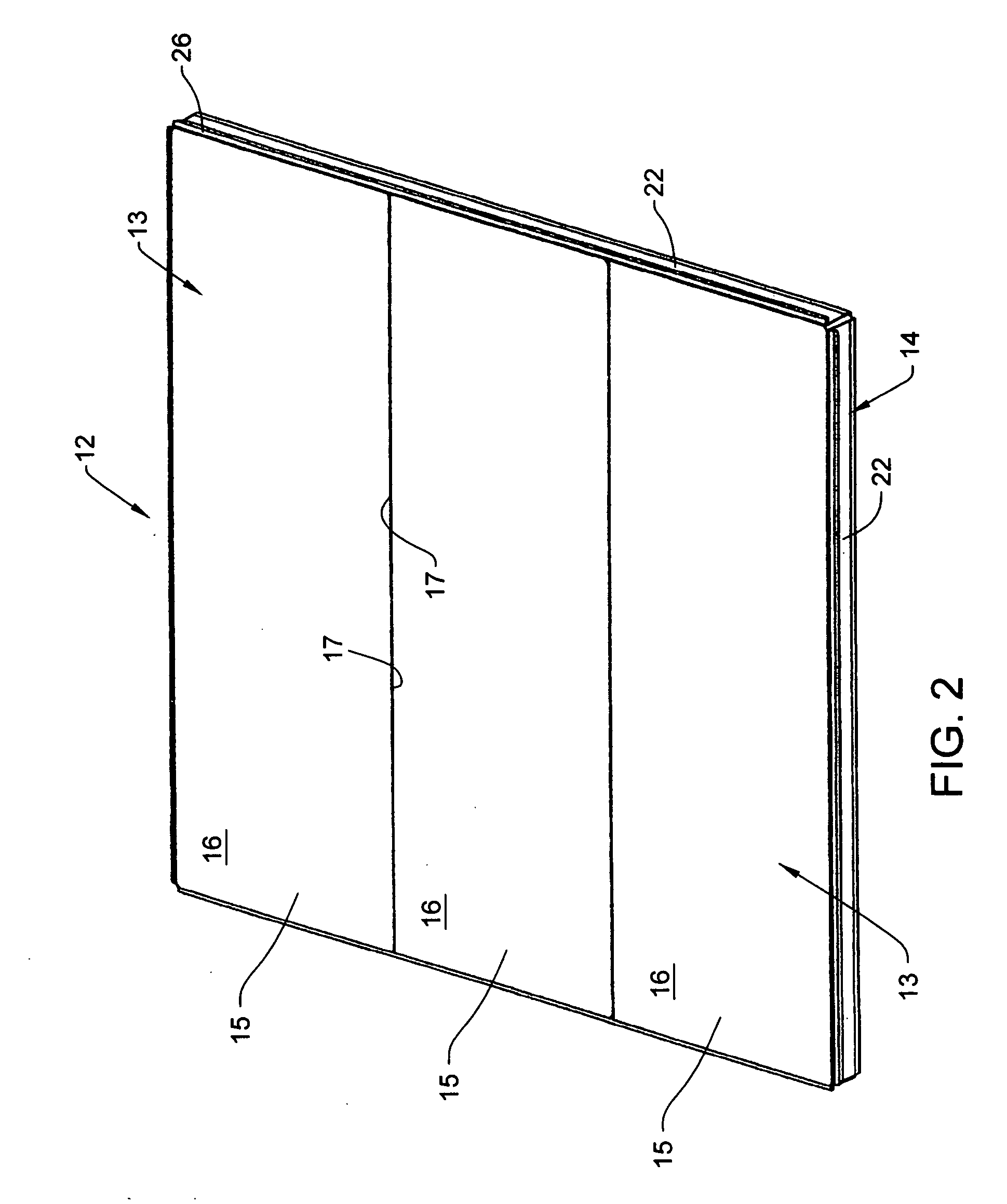Floor tile with adhesively bonded concrete
- Summary
- Abstract
- Description
- Claims
- Application Information
AI Technical Summary
Benefits of technology
Problems solved by technology
Method used
Image
Examples
Embodiment Construction
[0056]Referring to FIG. 1, there is illustrated a somewhat conventional raised floor arrangement 1 defined by a plurality of generally square removable floor tiles 2, the latter being supported on a plurality of upright pedestals 3 which are typically arranged in uniformly spaced relationship within rows and columns to define a grid, whereby each pedestal typically cooperates with the corners of up to four floor tiles. The arrangement of FIG. 1 also illustrates horizontally elongate stringers or rails 4 extending between and joined to adjacent pedestals 3, which stringers are frequently utilized to provide supportive engagement for the edge of the floor tiles, although in many systems the stringers are eliminated and the floor tiles are supported entirely by the pedestals. The conventional arrangement of a raised floor as diagrammatically depicted by FIG. 1 is solely for background purposes, and it will be understood that the improved floor system of the present invention as describ...
PUM
 Login to View More
Login to View More Abstract
Description
Claims
Application Information
 Login to View More
Login to View More - R&D
- Intellectual Property
- Life Sciences
- Materials
- Tech Scout
- Unparalleled Data Quality
- Higher Quality Content
- 60% Fewer Hallucinations
Browse by: Latest US Patents, China's latest patents, Technical Efficacy Thesaurus, Application Domain, Technology Topic, Popular Technical Reports.
© 2025 PatSnap. All rights reserved.Legal|Privacy policy|Modern Slavery Act Transparency Statement|Sitemap|About US| Contact US: help@patsnap.com



